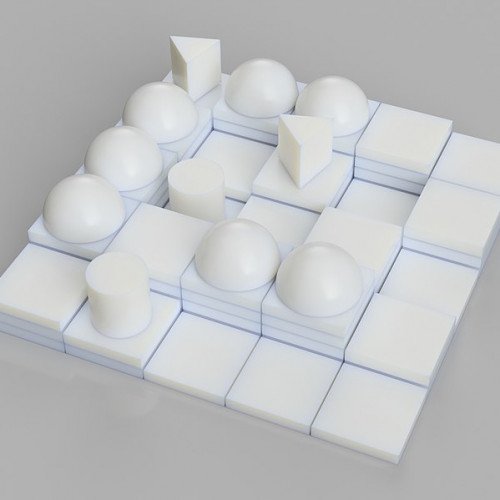SANTORINI VS SECTOR 41

SANTORINI
Santorini is an abstract strategy board game for 2-4 players designed and released in 2004 by Gordon Hamilton and republished via Kickstarter in 2016 by Roxley Games. Inspired by the architecture of cliffside villages on Santorini Island in Greece, and primarily designed for two players, the game is played on a grid where each turn players build a town by placing building pieces up to three levels high. To win the game, players must move one of their two characters to the third level of the town. Each turn of play involves moving one of your two pieces around a 5-by-5 grid each turn and then placing a tile adjacent to the moved piece, building up that spot of the board. On subsequent turns, pieces may be moved onto one of these built-up tiles, but only one level up at a time. Pieces may also be moved down any number of levels. Players may also place a special dome tile on top of a three-level building, which prevents a player from moving onto that spot for the remainder of the game. The primary winning condition is to get one of your pieces onto the third level, though players may also win if their opponent is unable to make a move. The Roxley Games version of Santorini introduced a god powers variant, which gives each player a unique way to break the rules. After being directly released and sold by Hamilton in 2004, Roxley Games ran a Kickstarter campaign during March-April 2016, drawing over 7,100 backers and raising over C$700,000, the most successful Kickstarter campaign ever based in Alberta. While the original release used plain white blocks as components, the Roxley version featured an enhanced cartoon-like look to the game, which Hamilton credits for success of the Kickstarter campaign. The game was released in retail outlets in January 2017.
Statistics for this Xoptio

SECTOR 41
Sector 41 is a board game published by David Long and Michael Lachtanski of Scimitar Games. The game became available for pre-order in February 2009 and was officially released in April 2009. Sector 41 is a turn-based strategy game for two to four players. Game play takes place on a 9×9 grid of face-down tiles, randomly shuffled at the beginning of each game. Players control one mother ship which moves along the edge of the game board. Mother ships can deploy up to three explorer ships onto the face-down grid. Explorer ships are used to discover, mine, and tow deposits of Glynium to their mother ship. According to the game background, Glynium is an unstable power source only found in this sector. Victory is achieved when one player has mined more Glynium than any other player could match. In the case of a tie, the first person to reach that score is declared the victor. Sector 41 was developed from a compilation of game concepts developed by David Long and Michael Lachtanski, the earliest of which go back to the mid-1990s. The name itself is an homage to the popular Area 51 science fiction theme. Play testing began in late 2007 and lasted until production began in late fall of 2008. The face-down tile set up was conceived of to emulate the fog of war mechanism, popular in many computer games. The developers also encourage players to strategically manipulate the board layout for offensive and defensive purposes through the process of "folding space". This game mechanism was inspired by the Dune novels. The lengthy play time in the initial play testing lead developers to create the Guardian figure. The Guardian, described below, acts as a mechanism for rewarding exploration, expansion, and reduced play time dramatically. Additional rules for modifying the Guardian's role in gameplay are available on the Scimitar Games website. Michael Lachtanski designed the game's graphics. Many of the space graphics are based on images from NASA.